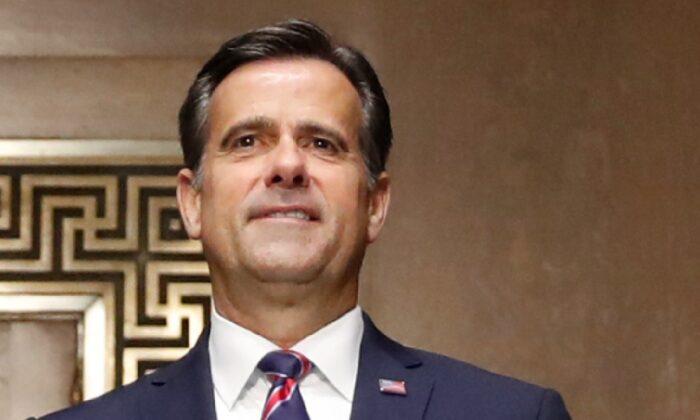Former Director of National Intelligence John Ratcliffe said that unidentified aerial phenomena (UAP), also known as UFOs, appear to display technology that the United States doesn’t have and can’t defend against.
“I’m actually glad that there’s a report out there,” Ratcliffe said in the interview. “The bottom line is, unidentified aerial phenomena—many, many cases we’re able to explain it away for reasons like visual disturbances or weather phenomena, or foreign adversaries and their technologies, or even our own experimental technologies with certain aircraft and vehicles.”
At the same time, he said there are a number of cases where no such explanations apply.
“What this report really underscores ... is that there are a number of instances—and the specific number remains classified—but a number of instances where we’ve ruled all of that out,” he said.
“And there are technologies that we don’t have and frankly that we are not capable of defending against—based on those things that we’ve seen, multiple sensors, in other words, where not just people visually see it but where it’s picked up on radar, where it’s seen on satellites,“ Ratcliffe said. ”It’s an issue of national security.”

Ratcliffe suggested that it’s unsettling that some of the aerial phenomena defy explanation.
“It’s not good to say, ‘Gosh, we don’t have good answers,’ and so we have to have a larger discussion to try and figure out specifically what this is all about,” he said.
The report, which was issued by the Office of the Director of National Intelligence in conjunction with a U.S. Navy-led UAP task force, studied 144 observations of unidentified aerial phenomena dating back to 2004, of which 11 caused “near misses” for military pilots.
“UAP pose a hazard to safety of flight and could pose a broader danger if some instances represent sophisticated collection against U.S. military activities by a foreign government or demonstrate a breakthrough aerospace technology by a potential adversary,” the report reads.
The report said that defense and intelligence analysts don’t have enough data to determine the nature of UAP observed by military pilots, noting that they could fall into a number of categories, including foreign adversary systems, natural atmospheric phenomena, or “other,” a catch-all category that, theoretically, could include extraterrestrial technology.
“UAP clearly pose a safety of flight issue and may pose a challenge to U.S. national security,” the report stated, adding that the phenomena “probably lack a single explanation.”
The Pentagon established the Unidentified Aerial Phenomena Task Force last August to explore observations of aircraft of unknown origin. The task force aimed to “detect, analyze and catalog” such events, and to “gain insight” into the “nature and origins” of UFOs, the Pentagon said.
In the run-up to the release of the report, Sen. Marco Rubio (R-Fla.) said last month that members of Congress and other officials need to seriously investigate UFOs and the potential threat they pose.
The senator said he wants the Pentagon to come up with a process to take UAP seriously.
“I want us to have a process to analyze the data every time it comes in,” he said. “That there be a place where this is cataloged and constantly analyzed until we get some answers. Maybe it has a very simple answer. Maybe it doesn’t.”





